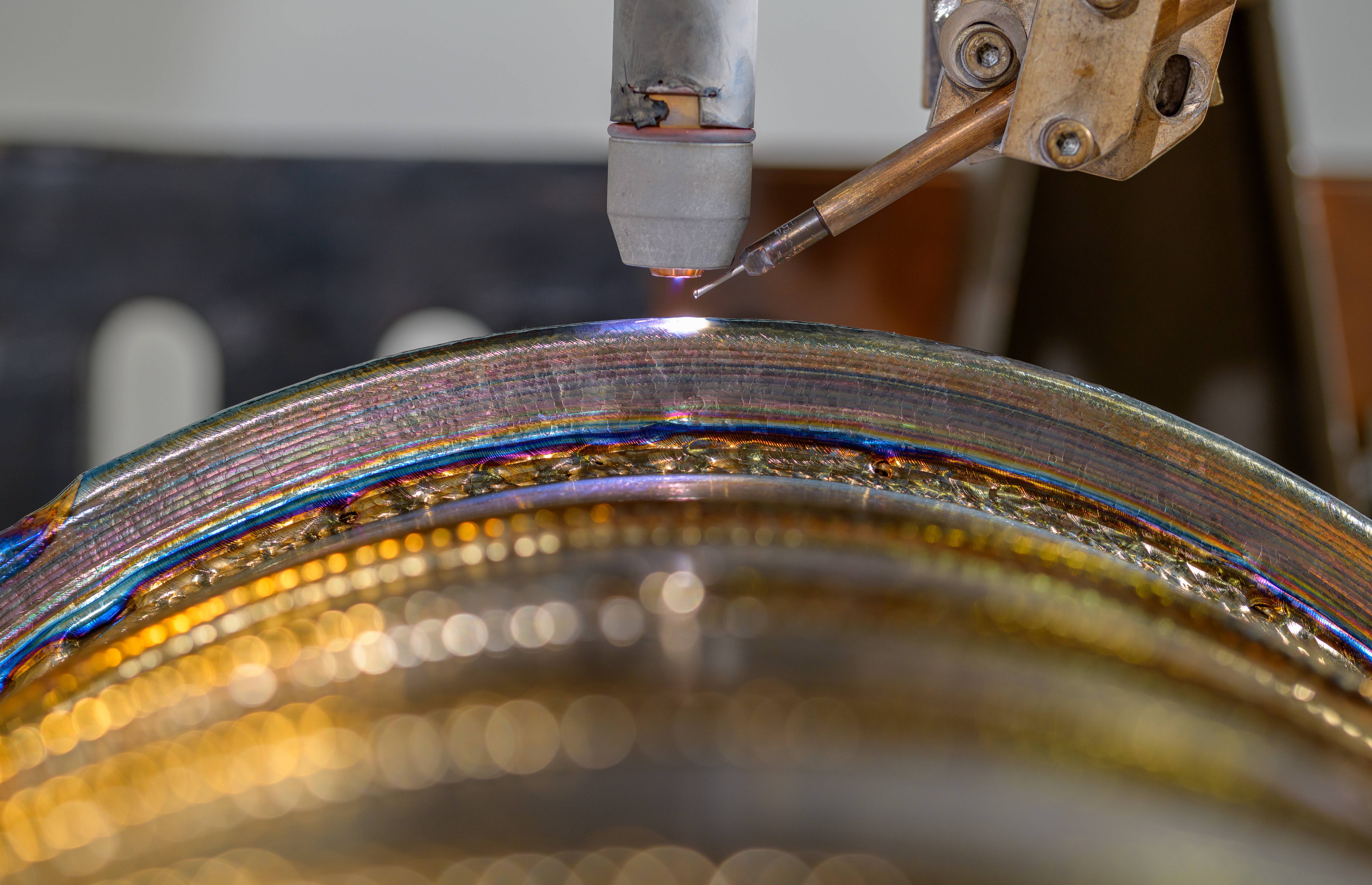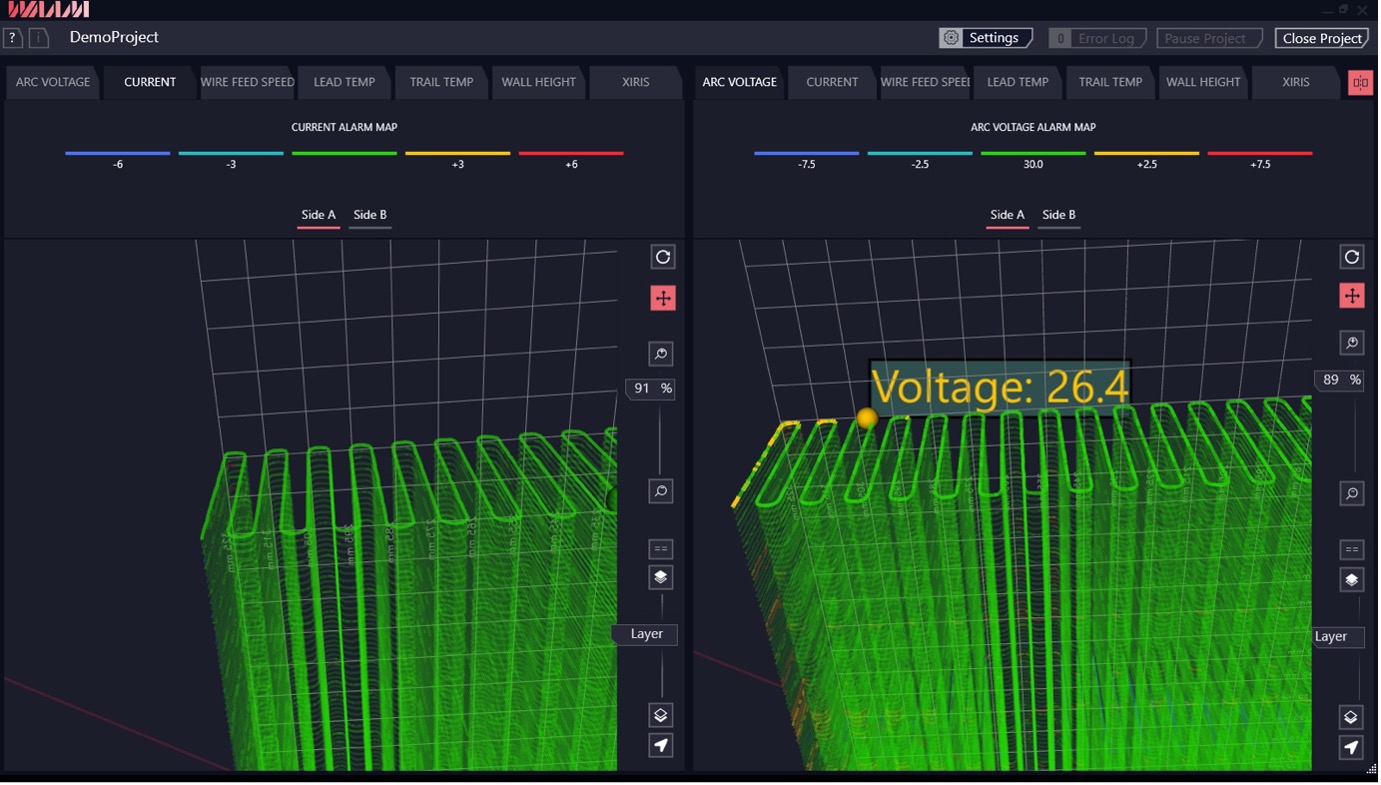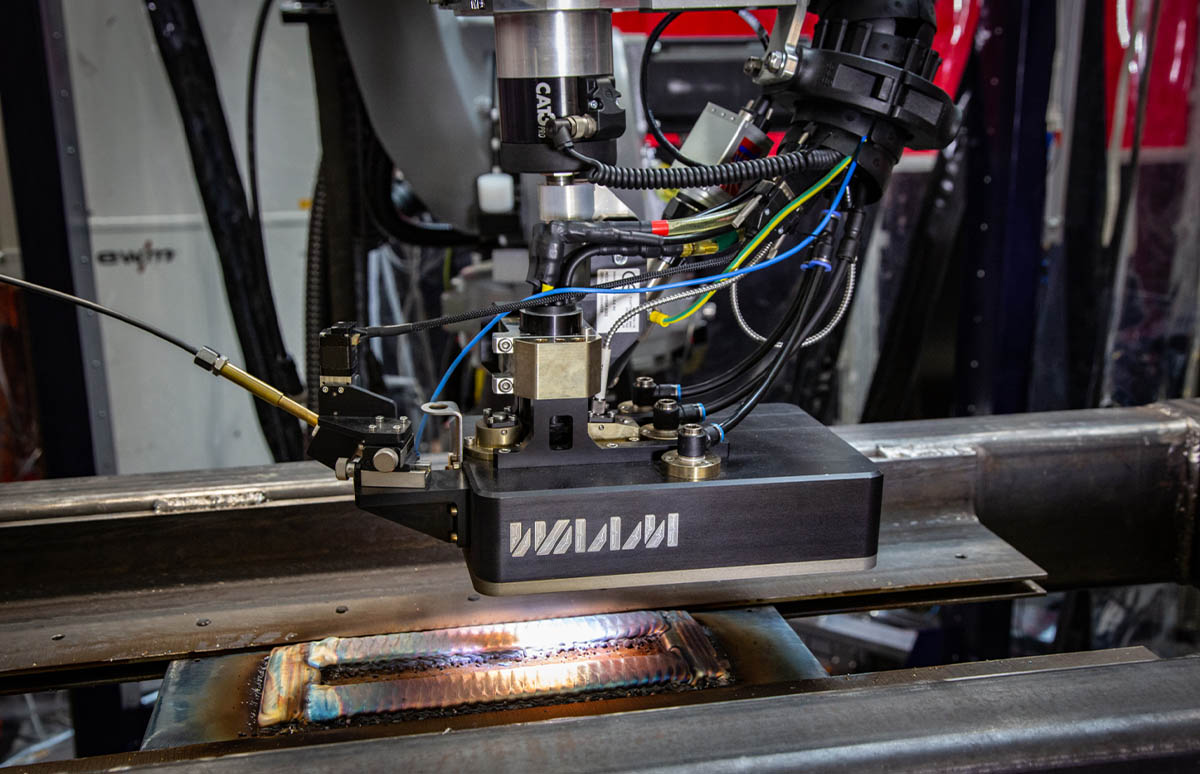Growth and potential of DED technology in various industries

The Direct Energy Deposition (DED) market has experienced and continues to experience significant growth over recent years. This is because it offers manufacturers of large parts impressive component production and repair opportunities. In fact, the DED market was valued at USD 403 million in 2023 and is expected to reach nearly USD 755 million by 2025i. This is largely being driven by the increasing adoption of 3D printing in industries such as aerospace, automotive, defence and healthcare.
DED is an additive manufacturing process that uses thermal energy (such as from a laser, energy beam or plasma arc) to melt materials as they are being deposited, to form a specific pre-determined structure. The powder or wire is heated and then deposited in its molten form, layer by layer, to either build or repair components. A variety of materials can be used, ranging from metals and composites to ceramics but DED is especially popular for use with metals and metal alloys. The process offers flexibility as different materials can be combined in the build process.
DED technologies are known for their ability to create parts using less material waste than subtractive manufacturing methods. They also offer precision and control, as the material can be placed with high levels of accuracy. Depending on the DED method used, complex designs can also be created.
Well suited to applications like multi-material building, large-part production and repair and cladding, DED 3D printing is becoming a technology of choice because the deposition rates achieved by it, which are higher than other known additive manufacturing processes, result in shorter production times than traditional methods. The produced parts and components are dense, and they have the same mechanical properties as wrought metal. In this article, we will look at a few industries that have the potential to greatly benefit from using Directed Energy Deposition.
Aerospace
DED technology can benefit the aerospace industry, especially when repairing high-cost parts of aircraft such as turbine blades, propulsion parts, structural components. And in this industry, DED 3D Printing technology can bring prototyping to a new level, as it provides fast iterations and revisions to aircraft components, alongside improving the complexity of the printed aircraft parts. DED's advantages of creating lightweight structures are also becoming more obvious for increasing the fuel efficiency of an aircraft.
DED's effectiveness in creating custom tools and fixtures are valued by many aircraft component manufacturers around the world. With the help of more flexible designs and faster development speeds, DED has succeeded in making drastic improvements to the pace of assembling and maintaining aerospace components. To read more about the helpful suggestions on the application of DED technologies into the field of aircraft components manufacturing, visit this blog.
Energy sector
DED technologies are increasingly utilised across a wide range of industry applications in the energy sector, ranging from oil and gas and energy generation to nuclear power; and they are an essential part of manufacturing component parts. In the oil and gas industry for example, this technology improves longevity and performance of drilling equipment, pipelines, and offshore structures. With DED, gas and steam turbine blades and nozzles manufactured in high-performance materials can be made more efficiently and without downtime. Nuclear reactors and waste management systems are also manufactured and repaired using DED. One of the enabling technologies of DED is WAAM (Wire Arc Additive Manufacturing) and this article explains how WAAM process, benefits oil and gas operators.
Marine
Using DED 3D Printing technology, marine additive manufacturers can overcome the manufacturing and repair of large structural elements in ship building. Using DED technology manufacturers can manufacture props, rudders and other marine parts and components, as well as offshore structures - components and equipment for use in the maritime sector. Ultimately, you can reduce maintenance and repair costs in the maritime industry using DED technologies, this is because they support the development of marine-related complex geometries suitable for manufacturing in a marine environment. Click here to learn about the possible extension of WAAM for marine parts.
Repair & Cladding
With DED, failed, fractured or simply worn-out components and parts can be restored for much less than the expense of replacement. Since DED can work with many materials, enhancing their properties, DED 3D printing can be used to fix a large number of different problem types, thus enhancing versatility. An advantage of this technology, when it comes to substitutability, is its ability to conduct immediate on-site repairs on very large, difficult-to-transport parts. In terms of cladding, another benefit of DED 3D printing is adding a second layer of ‘overcoat’ that’s good for preventing wear, corrosion or spalling, and thermal degradation. The benefit of the technology is a secondary (yet related) wear resistance. In targeted cladding processes, materials can be used more efficiently, and more resources can be saved. DED can also correspond with boosting component lifespan and with reducing material waste.
Research & Development
The most immediate value proposition of DED is its ability to create test samples of different compositions, physical properties, and heat treatments, to learn how different metals and alloys behave under different temperatures, time, stress, and environments. This learning enables the exploration and optimisation of different metals alloys, compounds, and material forms. DED technologies underpin rapid prototyping of new design concepts. Rapid manufacturing frees up time for researchers that would otherwise be spent on the low-value components of manual assembly of prototypes. Design concepts become validated and subsequently improved through iterative cycles of ‘test and learn’. This ‘test and learn’ process is of immense value to RD tasks across a diverse array of industrial research. The ability to test different hypotheses and creative design concepts faster helps to expand the breadth of the overall research agenda.
DED’s versatility doesn’t just open up opportunities in aerospace, energy, marine, repair and cladding and R&D. Alongside these industries it also delivers significant benefits to manufacturers in the automotive, defence and military and architecture and building sectors. In fact, any sector where critical component repair, or quick and efficient component creation is required, can benefit from DED.
WAAM sets new standards in DED
Wire Arc Additive Manufacturing (WAAM) is an additive manufacturing (AM) technology that uses an electric arc as a heat source to melt metal wire. It enables the creation of high-quality components with material utilisation close to 100%. Ideal for large structural components, it is generally more cost-effective than other DED processes due to lower material and operational costs. WAAM solutions can now offer additive manufacturers high levels of process control, robust evaluation, increased deposition rates and complexities and cost-effective production.
Real-world applications of WAAM Technology
- Aerospace:
Using wire arc additive manufacturing (WAAM), BAE's Eurofighter Typhoon rear frame was successfully printed, reducing its lead time from 100 weeks to 100 days. In 2019, the part was named the world's largest 3D-printed titanium part and won the 3Dprintingindustry.com award for automotive/aerospace application of the year.
- Space:
Multi-part titanium alloy (Ti64) satellite propellant tanks have been successfully printed within rigorous quality standards, undergoing multiple pressure tests and NDT checks in order to ensure their quality.
- Civil Engineering:
One of the first structures of its kind to use Plasma Transferred Arc welding during deposition is Foster + Partners' 7m long topology-optimized low alloy steel beam structure.
At Cranfield University, which is also known as WAAM3D's birthplace, the printings were conducted at the Welding and Additive Manufacturing Centre.
WAAM3D is a leading provider of WAAM solutions
At WAAM3D, we have experience in creating components, using large-scale metal additive manufacturing, across a wide range of industries. These include the aerospace, energy, marine and mining sectors. We also work with research bodies and a number of Catapult centres, supporting them with manufacturing innovation development.
Contact us if you would like to learn more about DED additive manufacturing and WAAM's potential for delivering you cost and speed efficiencies. We are happy to assist you.





